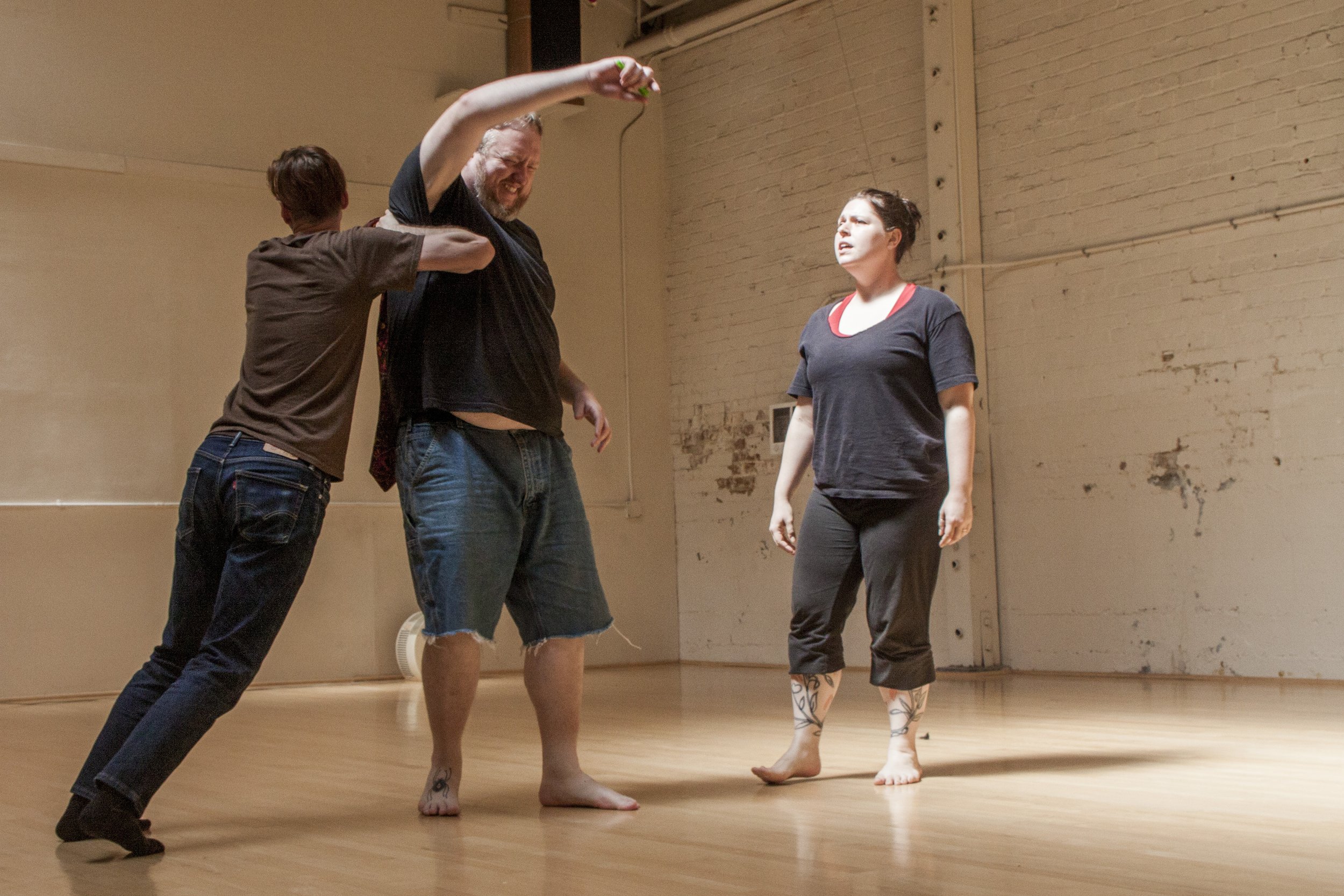Authenticity and Creative Collaboration in Full Spectrum Improvisation
Creating theatre from scratch is a great adventure that requires skill and an open heart, mind and body. One of the ongoing questions we embrace is: “How do I express myself authentically while connecting and co-operating with my partners?” This, of course, is a question that is alive in every relationship, on stage or off. Emotional safety is always an issue.
Developing enough self-awareness and self-trust to be transparent is an effective strategy for emotional safety on stage (and off stage, as well.)
To begin, we need to accept that all our emotions are equally valuable in theatre: joy, anger, excitement, fear, vulnerability, confusion… If we embrace these feelings we can use them as fodder for any piece we’re building. That is: the “character” is excited, nervous, vulnerable, relaxed, etc. You are a “character” even when in your own everyday persona.
In class we explore how to make authentically felt offers with sensitivity by focusing on the quality of the connection between players. You can feel when you’re connecting with another person. There’s a heightened sense of presence and trust, alert listening, ease of sending and receiving emotional cues.
This relationship is where we’ll find the “story” of the piece, in collaboration with our partners. The fictional story is born from the real energy between players. If you’re having difficulty connecting with your partner, that reality can be the premise for the story of the piece. Example: In a scene, an actor yelled like a petulant child at her partner “You’re not looking at me. I want you to look at me”. Through her “character” the actor was daring to tell the truth. Her partner got the message, made eye contact and the two connected. He then responded “When I look at you I feel confused”. The actors went on to create a poignant scene about these two people who obviously had a history together.
Recently, after doing a piece, a new student said “That felt real to me, so that’s not acting, right?” I had to smile, thinking of the many acting classes I’d attended where actors were struggling to “feel real”. When we act we enter the territory of me/not me, real/not real. We often discover aspects of ourselves that we don’t know well. The resemblance of improvisation to real life creates a unique situation when it comes to distinguishing one’s acting emotions from real feelings. They are all real feelings but with a kind of awareness that can provide enhanced ability to control and direct them.
So, what is an “authentic” offer? In Full Spectrum Improvisation we use our memories, associations, stories, responses, concerns and images to create theatre. We do this because we want the material, whether dramatic or comic, to be meaningful to us. An authentic offer is one that involves some degree of self-revelation.
In Improv training we learn the YES, AND principle: we accept and develop our partners offer. Unfortunately, all too often, players will block their own impulses in order to go along with their partner’s agenda. This creates pieces that don’t ring true and can be frustrating to do and to watch. In FULL SPECTRUM training we learn to respond honestly with techniques like ”Breaking the Frame” and “Direct Address”.
If we have clear and compassionate communication among the players and trust in the teacher/ director, our creative freedom is hugely increased. In class, I use techniques drawn from Non Violent Communication to work out conflicts or confusion that occasionally arise during practice or performance. Players reassure each other after an emotional piece that all is well between them. We hug, do “releasing” rituals and remind ourselves that, after all, we are playing.
